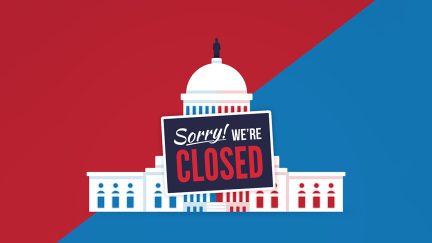Never miss a story — sign up for PLANSPONSOR newsletters to keep up on the latest retirement plan benefits news.
Will Regulation About Association Health Plans Satisfy the Intent?
Commenters about the Department of Labor’s regulation say it could result in state restrictions, ratings that will make costs unequal and may provide no inclusion for all small businesses that could benefit from it.
The Department of Labor (DOL) has received 722 comment letters thus far about its regulations for Association Health Plans (AHPs).
Some have expressed concern that it will take health employees out of the Affordable Care Act (ACA) health exchange, and that it will drive up costs for health benefits for larger employers. Still others say the regulations will not be workable or helpful unless certain changes are made.
In its comment letter, Gravie, Inc. addresses two aspects of the Proposed Rule: The nondiscrimination protection that would prohibit an AHP from developing different premium rates for different employer members, and a class exemption that would exempt self-insured AHPs from non-solvency requirements of a state laws regulating these arrangements.
Gravie explains that each participating employer in an AHP represents a distinct group of similarly situated employees that may be rated separately based on aggregate claims experience. The Health Insurance Portability and Accountability Act (HIPAA) does not restrict a health insurance issuer from charging a higher rate to one group health plan (or employer) over another. An issuer may take health factors of individuals into account when establishing blended, aggregate rates for group health plans (or employers). This may result in one health plan (or employer) being charged a higher premium than another for the same coverage through the same issuer.
Gravie suggests the regulations should allow AHPs to separately rate groups of similarly situated employees, which it says is consistent with HIPAA and other existing federal law. Rating employers separately improves the solvency of AHPs, will improve competition and choices in the market, and will permit AHPs to act in the “best interest” of participants, Gravie says.
The company explains that Employee Retirement Income Security Act (ERISA) section 514(b)(6)(A)(ii) provides that states may regulate self-funded multiple employer welfare arrangement (MEWAs) to the extent “not inconsistent” with ERISA. According to the DOL’s MEWA Guide, this means that states may:
- Require self-funded AHPs to meet more stringent standards of conduct;
- Require self-funded AHPs to provide state mandated benefits; and
- Require self-funded AHPs to obtain a license or certificate of authority—which may ultimately be at the discretion of state insurance regulators—or face taxation, fines and other civil penalties, including injunctive relief.
Gravie notes that the Executive Order issued by President Donald Trump says the goal of AHP reform is to permit small employers to overcome the “competitive disadvantage” with large employers and “allow more small businesses to avoid many of the [ACA]’s costly requirements.” But as of 2014, at least 46 states have enacted and signed more than 175 laws specific to ACA health insurance implementation, including mandated “essential health benefits.” And nearly all states have existing “anti-MEWA” statutes on the books.
“Without an exemption from non-solvency rules, self-funded AHPs based on geography will be limited to a handful of states without restrictive anti-MEWA laws, and it may be unfeasible for those AHPs to provide coverage for metropolitan areas that cross state lines. And due to the patchwork of state laws and regulations throughout the United States, it will be virtually impossible to establish self-funded AHPs that cross state lines for workers in the same industry, line of business or profession,” Gravie says. “The Department should issue a class exemption for self-insured MEWAs under Section 514(b)(6)(B) of ERISA.”
The National Federation of Independent Business (NFIB) says, “Small business employers, in particular, would benefit from expanded availability under ERISA of multiple employer Association Health Plans, as small businesses may not have any other means to gain access to large group insurance contracts.” However, the group expresses concerns about the definition of employer under ERISA for the AHP regulations.
According to the NFIB, Section 3(5) of ERISA defines the term “employer” to mean “any person acting directly as an employer, or indirectly in the interest of an employer, in relation to an employee benefit plan; and includes a group or association of employers acting for an employer in such capacity.” The DOL’s proposed definition of the statutory term “group or association of employers,” modifies the statutory phrase with the term “bona fide.” NFIB says that term was initiated by the DOL in its advisory opinions to distinguish between associations that met the requirements to establish a multiemployer employee welfare benefit plan (which the DOL labeled “bona fide” associations) and associations that did not meet those requirements, which the DOL viewed as akin to private commercial insurance marketers. The NFIB suggests the DOL remove the term “bona fide” from its AHP proposed regulations.
In addition, the NFIB suggests the DOL include small business size as a “commonality-of-interest” The DOL has advised that “[t]he representational link between employees and an association of employers in the same industry who establish a trust for the benefit of those employees” supplies the “requisite connection” to meet the commonality-of-interest requirement. The DOL would find the requisite connection if employer members are in the same trade, industry, line of business, profession, state or metropolitan area, whether in a single state or not. NFIB wants this to include “employers being small in size, as measured by the number of their employees.”
In its comment letter, the NFIB also recommends expanding governance alternatives and allowing demonstration in other ways than “control” that an association acts “in the interest of” employer members.
All comment letters sent to the DOL may be viewed here.

